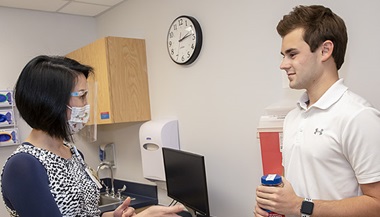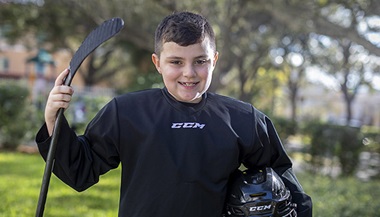Histiocytosis
Histiocytosis, also referred to as Langerhans Cell Histiocytosis (LCH), and formally called Histiocytosis X, represents a group of rare disorders involving specific cells that normally have important roles as part of the immune system. While the cause of LCH is unknown, LCH can frequently behave like cancer and so is treated by cancer specialists.
Histiocytosis is a generic name for a group of syndromes characterized by an abnormal increase in the number of certain immune cells called histiocytes. These include monocytes, macrophages, and dendritic cells.
A histiocyte is a normal immune cell that is found in many parts of the body especially in the bone marrow, the blood stream, the skin, the liver, the lungs, the lymph glands and the spleen. In histiocytosis, the histiocytes move into tissues where they are not normally found and cause damage to those tissues. These proliferating immune cells may form tumors, which can affect various parts of the body.
LCH is often classified as single system, when the disease affects only one part of the body, or multisystem, when it affects more than one part of the body. In children, histiocytosis usually involves the bones and may consist of single or multiple sites. The skull is frequently affected. Children over five years of age usually have the single system disease, with just bone involvement. Young children, especially infants, are more likely to have the multisystem disease.
Most cases of histiocytosis affect children between the ages of one and 15 years, although people of all ages can develop LCH. The incidence peaks among children between 5 and 10 years old. Histiocytosis is thought to affect roughly one to two out of 200,000 people each year.
Risk Factors
The exact cause of histiocytosis is unknown. However, recent studies indicate that it is caused by the development and expansion of an abnormal Langerhans cell that subsequently leads to the accumulation of other cells of the immune system, resulting in collections or tumors in various areas of the body. Some forms are genetic.
Cancer Symptoms
The first sign of histiocytosis is often a rash on the scalp, similar to cradle cap. There may be a pain in a bone, discharge from the ear, loss of appetite and fever. Sometimes the stomach is swollen and painful. Occasionally, an area of the brain known as the pituitary gland is affected, and this can lead to the child passing large amounts of urine and being very thirsty. Other potential signs and symptoms include: weight loss, jaundice, vomiting, limping, short stature, delayed puberty, mental deterioration, headache, dizziness, seizures, protruding eyeballs, and/or a generalized rash.
The tumors produce a "punched-out" appearance on bone X-rays. Sometimes, children experience spontaneous fractures as a result of these bone lesions. There is often systemic involvement as well, which may affect the whole body and cause rashes, lung problems, gum infiltration, lymph gland swelling, hormonal problems, enlargement of the spleen and liver, and anemia.
Diagnostic Tests
Diagnostic tests include: a biopsy, in which a small sample of skin and/or bone is taken and examined under a microscope for abnormal cells; routine and sometimes specialized X-rays and scans of the bones, the skull, and the lungs; and blood tests. These tests will help the doctor determine if the disease is the single system or multisystem type.
An X-ray of the entire skeletal system may be done to determine how extensive the disease is and whether or not the systemic involvement is indicated.
Treatment
Depending on the extent of the disease, LCH is often treated with chemotherapy and steroids to suppress the function of the immune system and the production of histiocytes. The length of treatment will vary from child to child. Many patients are eligible for international as well as local institutional trials.
Radiation therapy, treatment with targeted X-rays, or limited surgery may also be used to treat bone lesions.
The majority of children who develop histiocytosis have complete recoveries, with older children having the highest recovery rates. Sometimes the disease can recur, so the child will have regularly scheduled follow-up visits in the outpatient clinic as a precaution.
Research
New ideas are being tested to determine the causes of LCH as well as why some patients respond better to treatment than others. New types of therapies are being developed, including new types of drugs, as are approaches that direct antibodies or small molecules to the abnormal Langerhans cell while sparing the normal tissues.
The Division of Pediatric Oncology has a comprehensive program of consultation and care for treatment of patients with Langerhans Cell Histiocytosis (LCH).
In addition, research is being directed toward the development of antibody-targeted approaches for the diagnosis and treatment of patients with LCH.




